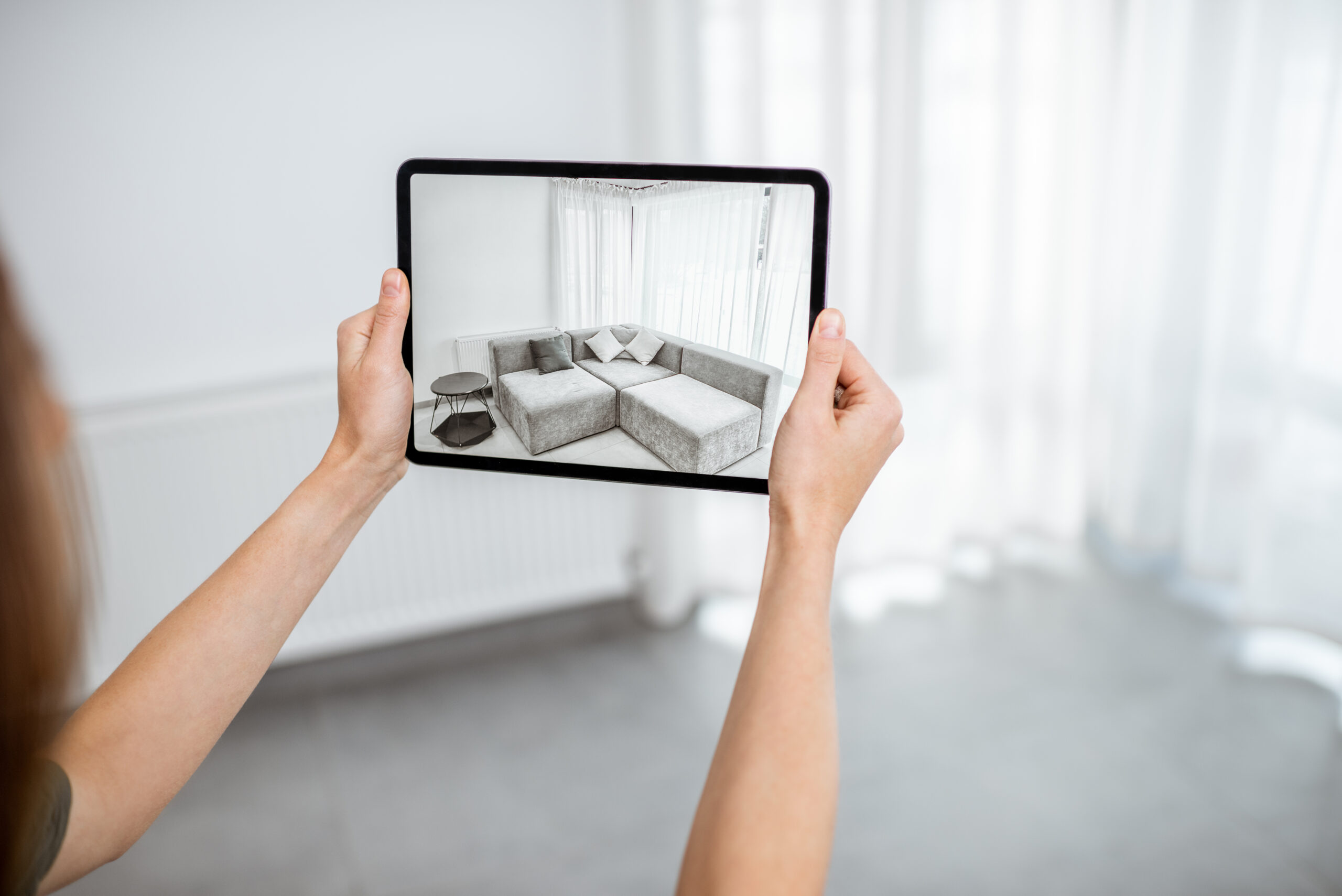
Discover what Augmented Reality is and how to successfully implement this innovative technology in your business. Boost your productivity and revolutionize your workflow!
What is Augmented Reality (AR)?
ARy is a technology that projects digital information such as text, images, videos or 3D models onto the real world. With the help of AR devices such as smartphones, tablets, or special glasses, users can enrich their environment with additional information, creating an interactive and enhanced experience. Unlike Virtual Reality (VR), which immerses the user in a completely artificial environment, AR adds digital content to the real world, creating an interactive and immersive experience.
AR vs. Mixed Reality: What is the Difference?
Although AR and Mixed Reality are often used synonymously, there is a fundamental difference between the two technologies. AR extends the real world by overlaying digital information such as images or text onto the physical environment. In contrast, Mixed Reality combines the physical and digital worlds by integrating virtual objects into the real environment and making them interactive.
How Does Augmented Reality Work?
It uses various technologies such as cameras, sensors, and algorithms to determine the position of digital information in the real world. In most cases, AR is delivered via mobile devices or special AR glasses such as Microsoft HoloLens 2 or Magic Leap 2, capturing information from the physical environment and enriching it with digital content in real-time.
There are five important components of AR:
- Artificial Intelligence (AI) – Most AR solutions require AI to enable users to perform actions through voice commands. AI can also assist in processing information for your AR application.
- AR Software – These are the tools and applications used to access AR. Some companies may create their own AR software.
- Processing – You need processing power for your AR technology to function, typically by utilizing your device’s internal operating system.
- Lenses – You need a lens or image platform to display your content or images. The higher the quality of your screen, the more realistic your image appears.
- Sensors – AR systems need to process environmental data to align the real and digital worlds. When your camera captures information, it sends it for processing through the software.
What Types of Augmented Reality Exist?
• Marker-based Augmented Reality:
Marker-based AR uses visual markers, such as QR codes or special symbols, to place virtual objects in the real environment. These markers are captured by a camera, and their associated digital content is displayed on the screen. Examples of applications include information displays in museums or product packaging.
• Markerless Augmented Reality:
Markerless AR does not require markers. Instead, the software recognizes the environment and places digital objects based on sensors and algorithms. This technology is often used in navigation apps or for interior design.
• Augmented Reality in Wearable Technology:
By using wearables such as smart glasses or AR glasses, virtual information can be directly displayed in the user’s field of view. This enables an immersive experience and can be used in various industries, such as medicine, gaming, or logistics.

What Devices are Most Commonly Used
Smartphones and Tablets
Smartphones and tablets are the most widely used devices for AR applications. Integrated cameras and sensors allow them to capture the environment and display digital content. Popular AR apps such as Pokémon Go or IKEA Place use this technology for an interactive experience.
AR Glasses and Headsets
AR glasses, such as Microsoft HoloLens or Magic Leap One, are specially designed headsets that project virtual objects directly into the user’s field of view. They enable an immersive AR experience and are particularly used in the fields of medicine, industry, and education. Projectors and Screens:
Projectors and interactive screens can also be used for AR applications. By projecting virtual elements onto physical surfaces, an augmented visual experience is created. This technique is often used in industry or events.
Applications of Augmented Reality in Business
AR can be used in various areas to improve work processes and increase efficiency. Here are some examples:
a) Maintenance and Repair: Technicians can use AR glasses to obtain real-time information about machinery and equipment. This makes it easier to identify problems and perform repairs.
b) Training and Education: AR can be used to provide interactive training to employees by integrating 3D models and instructions directly into the real environment.
c) Product Development: With AR, designers and engineers can visualize virtual prototypes in the real environment, allowing them to develop new products faster and more cost-effectively.
d) Marketing and Sales: By combining real and virtual elements, companies can present their products and services in an appealing way, strengthen customer loyalty, and positively influence purchasing decisions. AR allows for the development of personalized advertising campaigns, displaying individually tailored information and offers directly in the user’s environment. In retail, AR can improve the shopping experience by displaying real-time product information, customer reviews, or special offers. In online retail, AR offers the opportunity to try products virtually or place them in the user’s environment, which increases customer confidence in their purchasing decisions. Additionally, AR can be used in sales to enhance sales presentations by providing interactive 3D visualizations to explain complex products or services.

Steps to Implement Augmented Reality in Business
Successfully implementing AR in your business requires careful planning and consideration of various factors. Here are some steps you should follow:
a) Define Objectives:
Define clear objectives and a strategy for using AR in your business. Consider which business areas and processes could benefit most from the technology, and develop a vision for how AR can help you achieve your business goals. An augmented reality agency can support you in this process.
b) Technology Selection:
Choose the appropriate AR devices and platforms that meet your requirements. Consider aspects such as user-friendliness, compatibility, and costs.
c) Content Creation:
Create AR content that supports your objectives and strategy. The content should be tailored to the needs of your target audience and provide a unique user experience. It is important that the content is not only visually appealing but also informative and useful for the user.
d) Conduct Pilot Projects:
Before implementing AR technology on a large scale, it is recommended to conduct a pilot project. Test the technology in a smaller environment and gather feedback from users to identify and solve potential problems early on.
e) Employee Training:
Ensure that your employees have the necessary skills and knowledge to effectively use AR technology. Offer training and workshops to ensure that all employees are able to successfully integrate the technology.
f) Measurement and Optimization:
Measure the success of your AR implementation based on defined KPIs and optimize your strategy and content based on feedback and experience. Regular review and adjustment can ensure that your AR implementation supports your business success.
Overall, implementing AR in business requires careful planning and consideration of various factors. By following these steps, however, companies can ensure that they develop and implement a successful and effective AR strategy that provides value for both the company and the user.